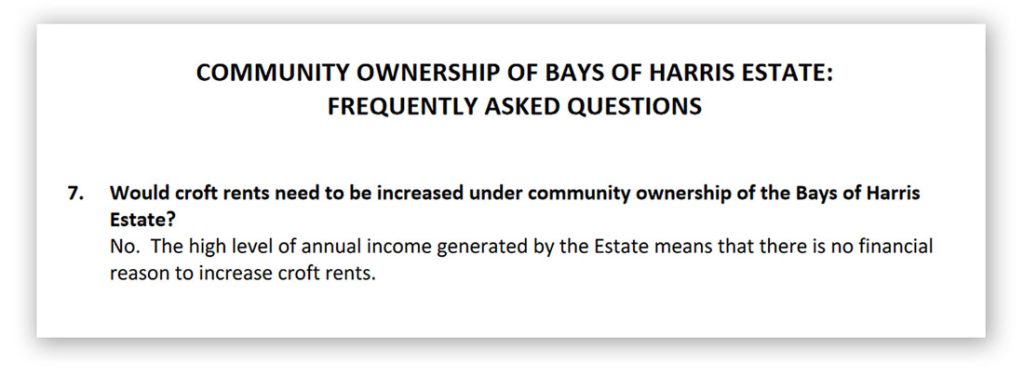
Crofting has historically played a major role in keeping people on the land, although crofting on its
own has not been sufficient to prevent a major decline in population in the area. However, it is likely
that if security of tenure had not been granted by the Crofting Acts and people had been unable to
build their own homes, there would be few people resident across the state today.
Crofting can still play a significant role in maintaining the fabric of the community and contributing
to a sustainable economy and society in the decades to come. Traditional crofting activities of
livestock rearing and crop growing have declined significantly due to the changing economics of
agricultural production and support being less favourable to those in remoter areas with poorer
quality land, the rise in people’s ability to earn an income solely from paid employment, and the
reduction in active crofters making it harder to carry out communal activities. Nevertheless, there
continues to be significant traditional activity on the part of some and a diversification into other
activities such as tourism businesses by others.
A Bays of Harris community landowner will seek to use some of its revenues to support crofting
community practices and development. In seeking to regenerate the area it will focus on providing
support to longer term investments which by their nature are made by those who intend to stay in
an area. It will aim to provide focussed support to individuals looking to start crofting activity for the
first time or to start a new business, because keeping people in/attracting people to the community
and enabling young people to raise families will bring strong benefits at the community level in
terms of population numbers, improved demographic profile and a strengthened economy.
There can also be spin offs to local townships through issues such as improved fencing of hill ground
leading to reduced problems caused by straying livestock, woodland creation improving local
amenity, and self-closing gates improving access and reducing the problem of gates being left open.
Following a community purchase a fund will be created to which common grazings/individuals could
apply. Decisions will be made on the basis of set criteria such as benefits to be delivered, match
funding available from other resources, own resources to be used, age of applicants and family
members. Crofters are familiar with applying to programmes such as the Scottish Rural Development
Programme (SRDP) where applications are scored against set criteria, so this will not be a novel
approach. For illustrative purposes a figure of £10,000/annum is used in the cash flow projections in
Section 8. Intervention rates in the Crofting Agricultural Grant Scheme (CAGS) are 60% for those 41
and over and 80% for those under 41. Where groups apply the standard intervention rate is 60% but
for those meeting the young farmer criteria the rate is 90%. An intervention rate of 10% from a
community fund would lead to a total investment of £100,000.
The above is an extract from our Business Plan, prepared by Duncan MacPherson & Faye MacLeod in 2022

